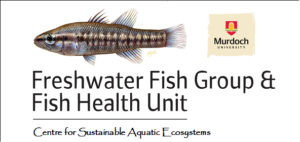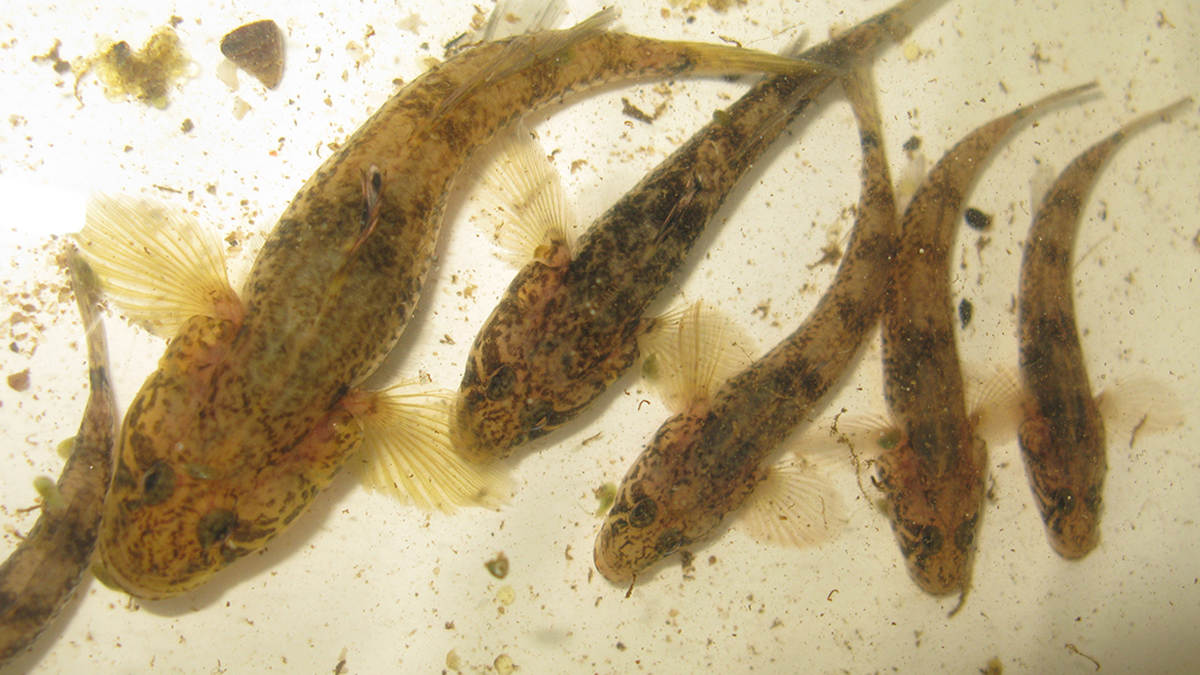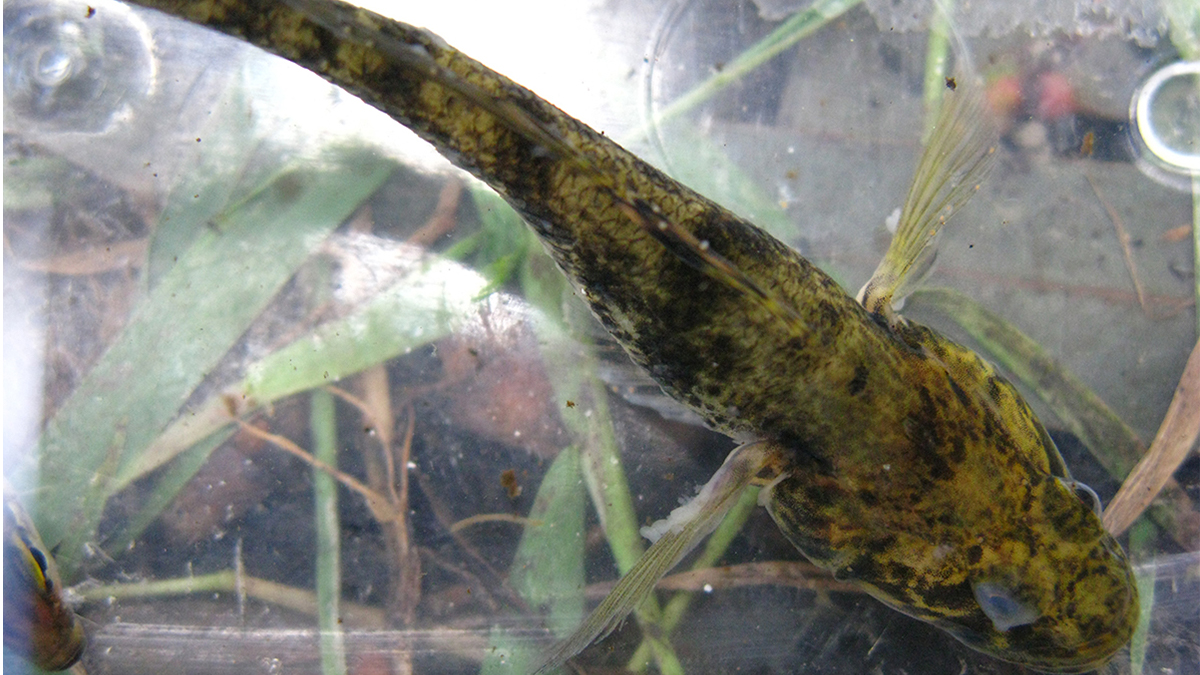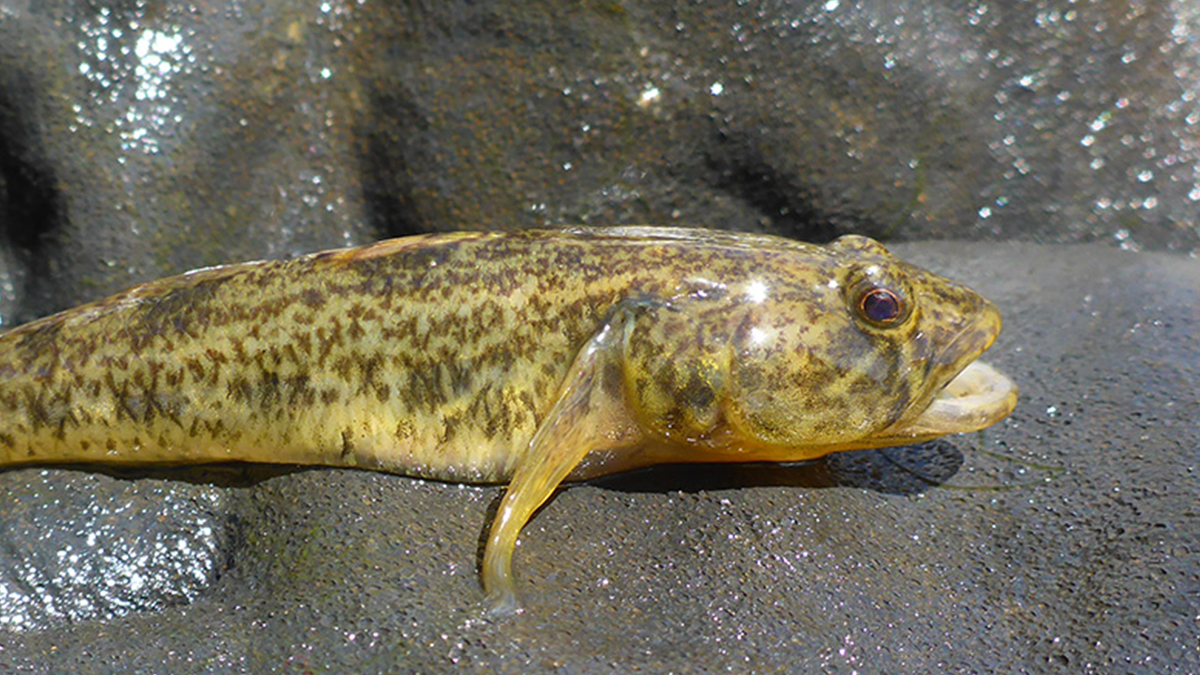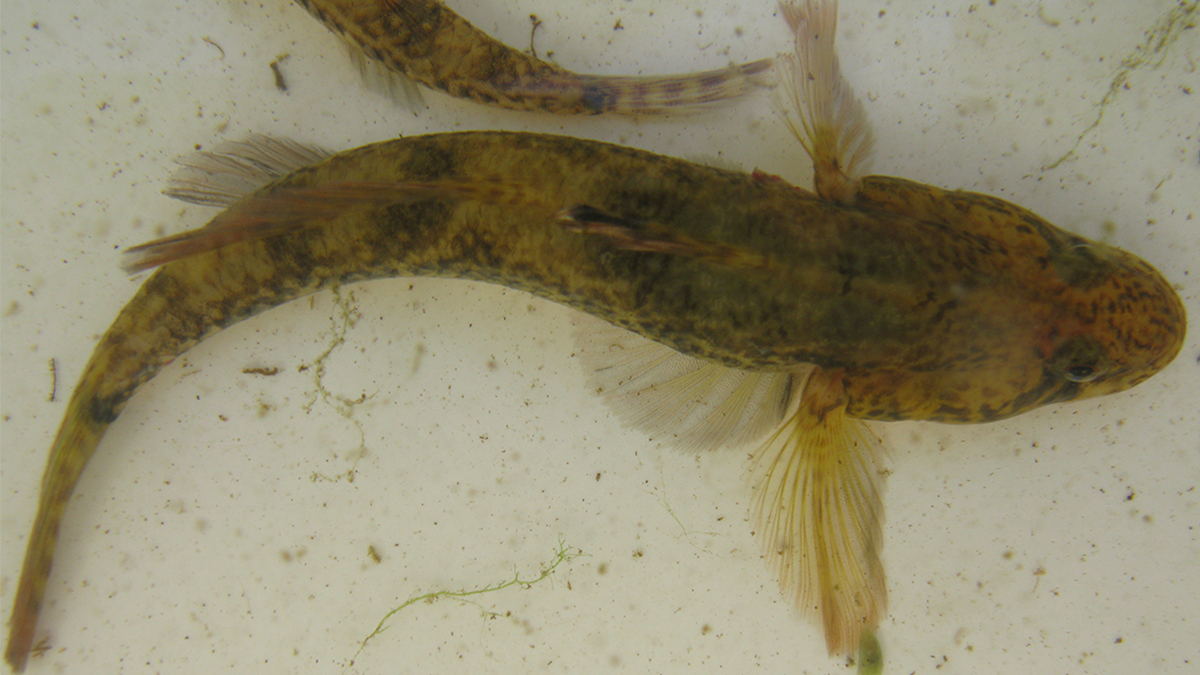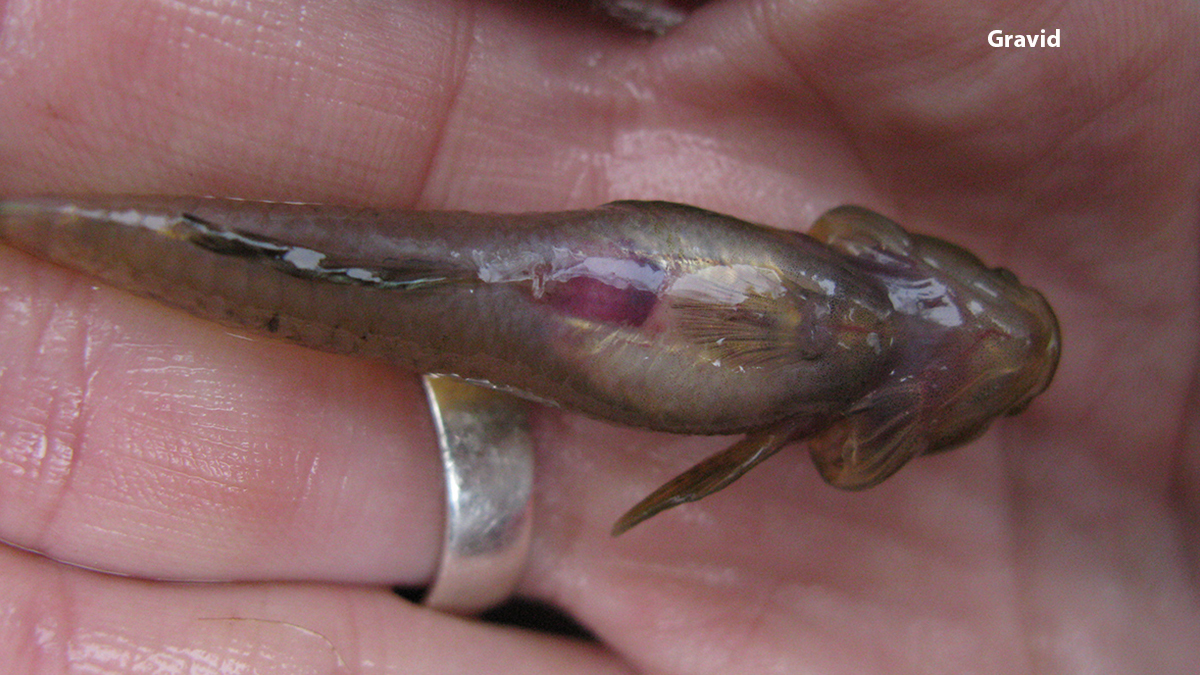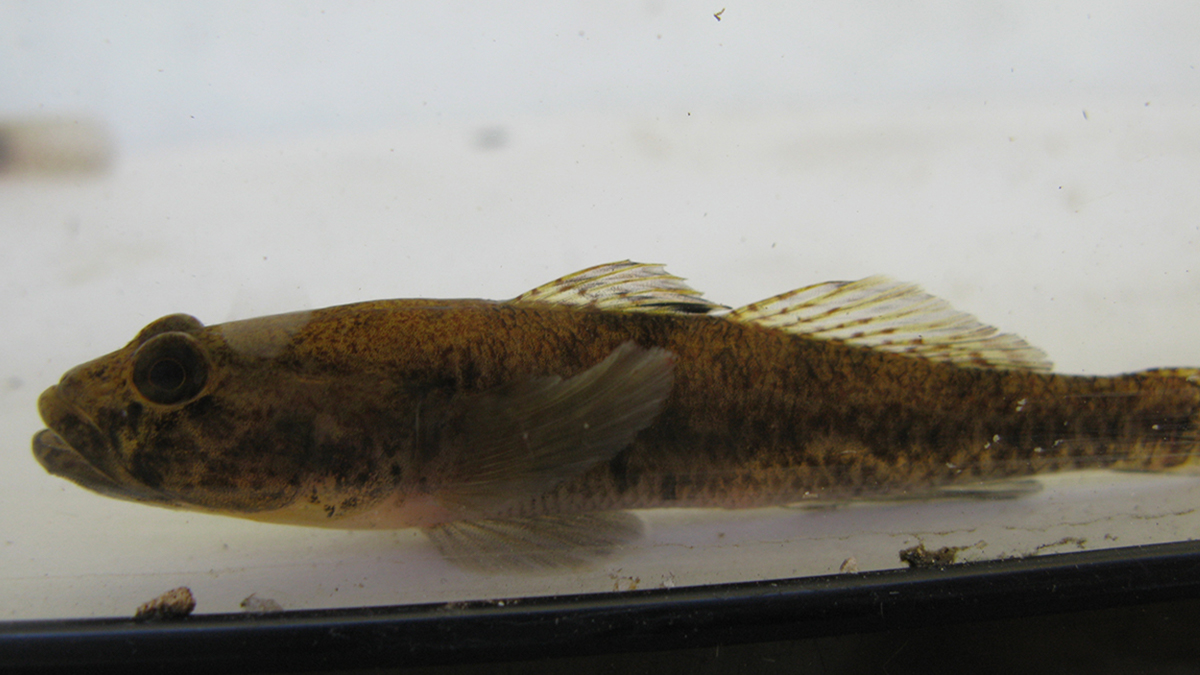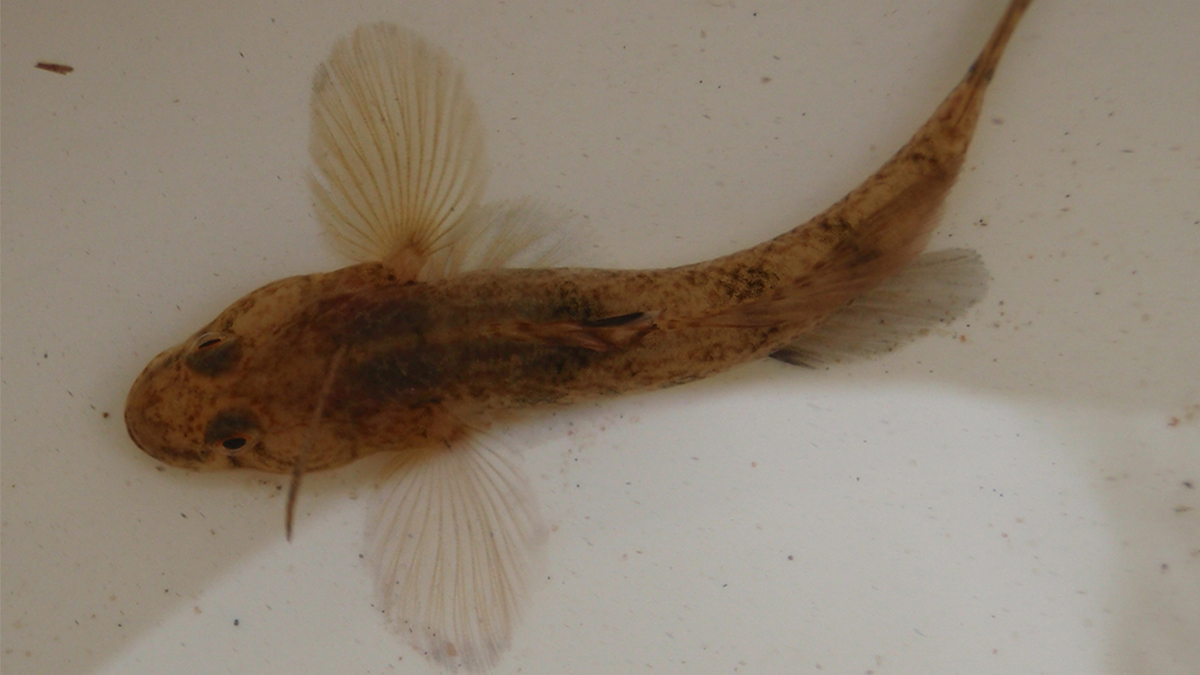South-western goby - Afurcagobius suppositus
This page was created in partnership with the Freshwater Fish Group and Fish Health Unit at Murdoch University
Identification
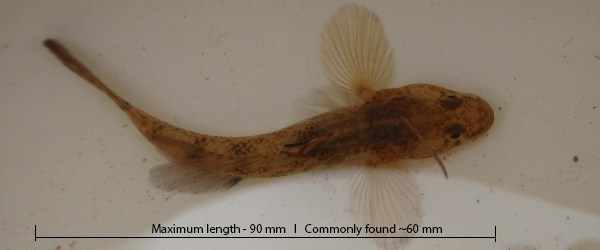
A moderately large goby (largest in fresh waters of the south-west) - found to 90 mm in some areas, though more typically encountered around 60 mm.
Dorsally flattened head and snout, which distinguishes it from the blue-spot goby (Pseudogobius olorum). The two species can also be separated by mouth size and type, with the south-western goby having a superior mouth (mouth in front of the snout, and also with the lower lip typically in front of the upper tip) and extending to or even past the eye. Note: the mouth of the blue-spot goby is generally inferior (behind the snout) and typically ends before the middle of the eye. Refer to the draft guide for identifying these species in the Gallery.
Colour is greyish-brown with variable darker blotches and mottling on the head and body. The first dorsal fin has a dark spot on the rear corner and generally has an obvious golden submarginal band. Pelvic fins can also have an iridescent golden sheen.
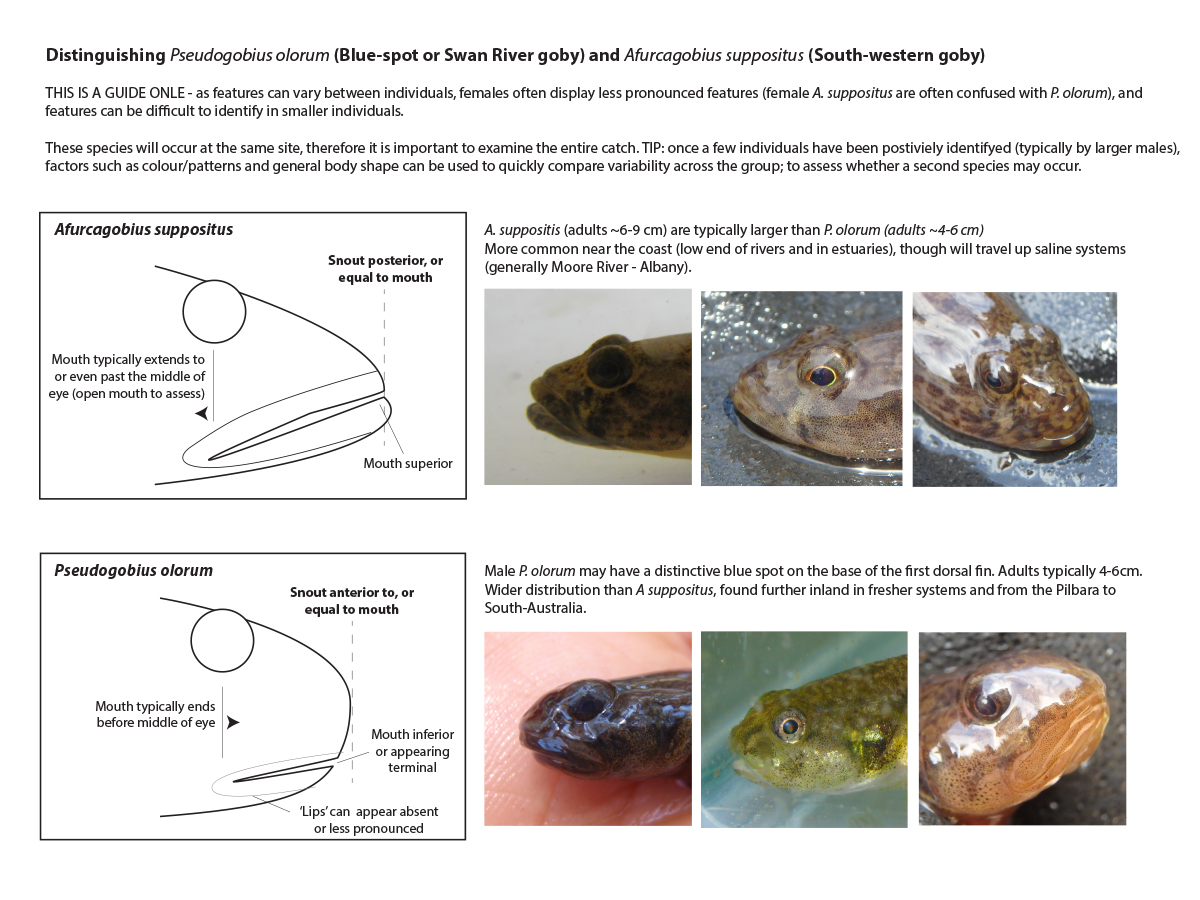
Distribution
Widely distributed across coastal drainages in the south-west from Moore River (north of Perth) to south of Albany.
Occurs mostly in estuaries, however will penetrate far inland in some systems – particularly salt-affected areas such as the Blackwood River. Also found in some freshwater lakes (e.g. Lake Jasper).
Usually abundant in areas in which it occurs.
Habitat
A benthic species most commonly seen in slow-flowing brackish estuaries, coastal lakes and rivers. Typically found on mud, sand or gravel sediments.
Biology
Reproductive biology has not been extensively studies, however it is expected to breed in late spring and early summer (November to December) at about one year old. Females lay eggs amongst stones and aquatic vegetation, which are protected by males.
Conservation status
Not listed as threatened.
Further information
Contact the department’s River Science team, or the Murdoch Freshwater Fish Group via email: fish@murdoch.edu.au, or go to their website: www.freshwaterfishgroup.com
